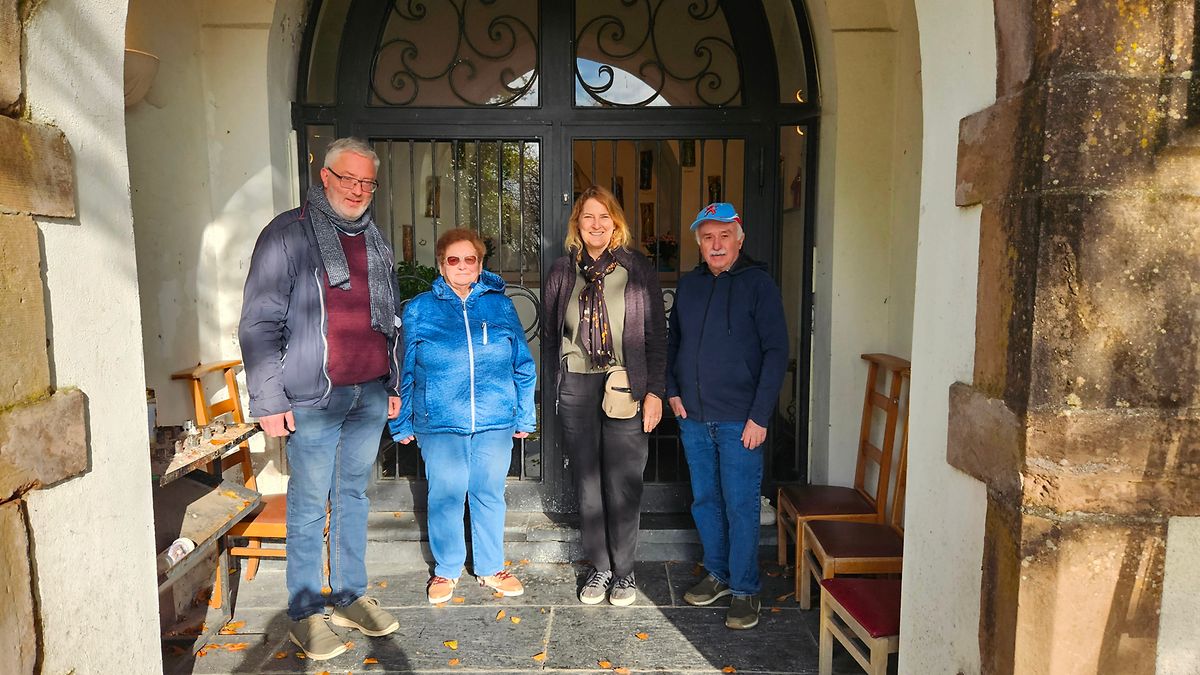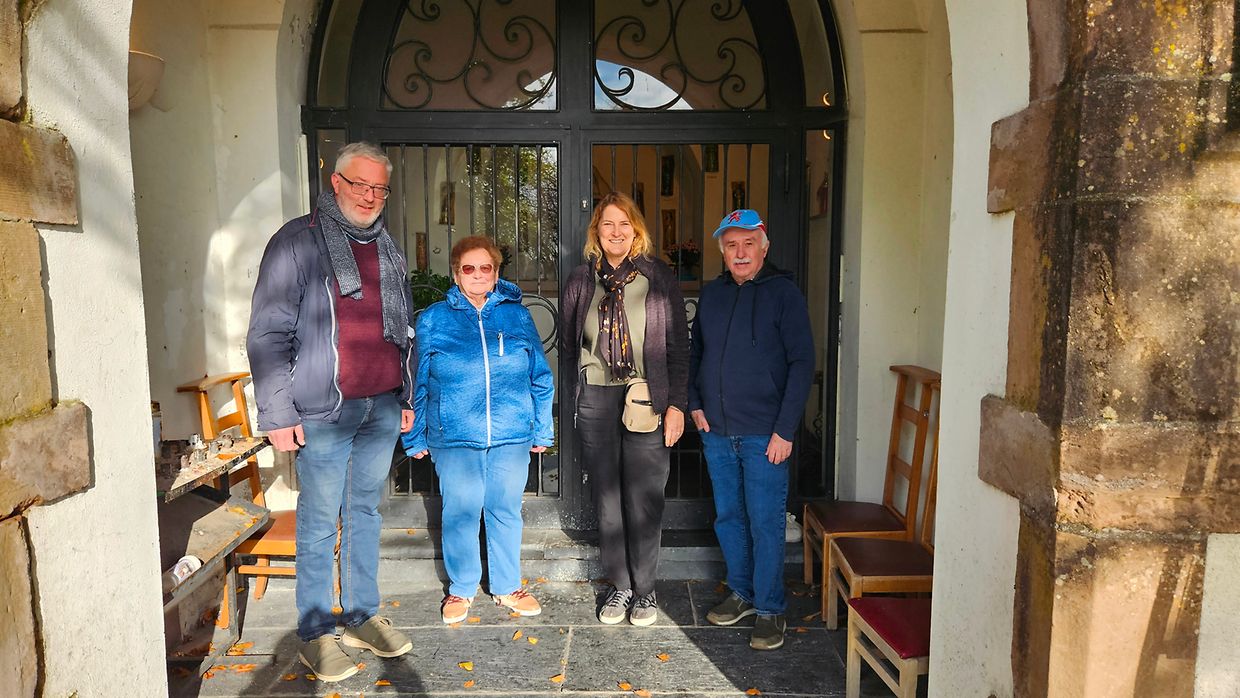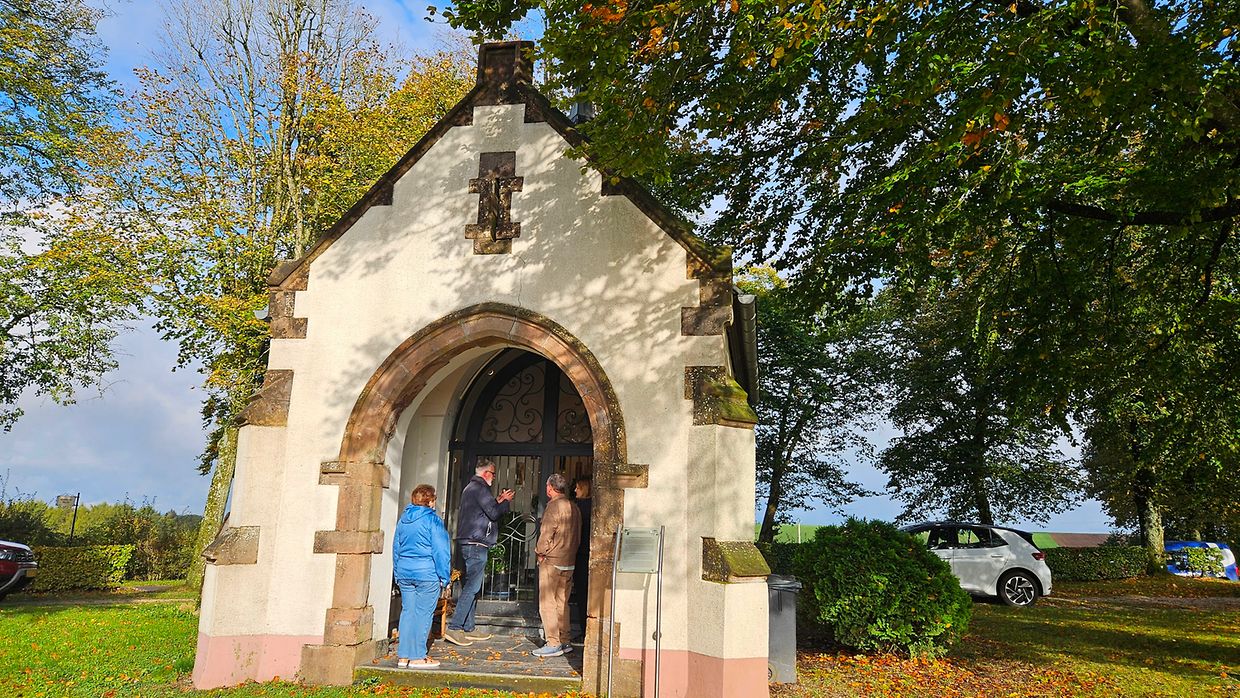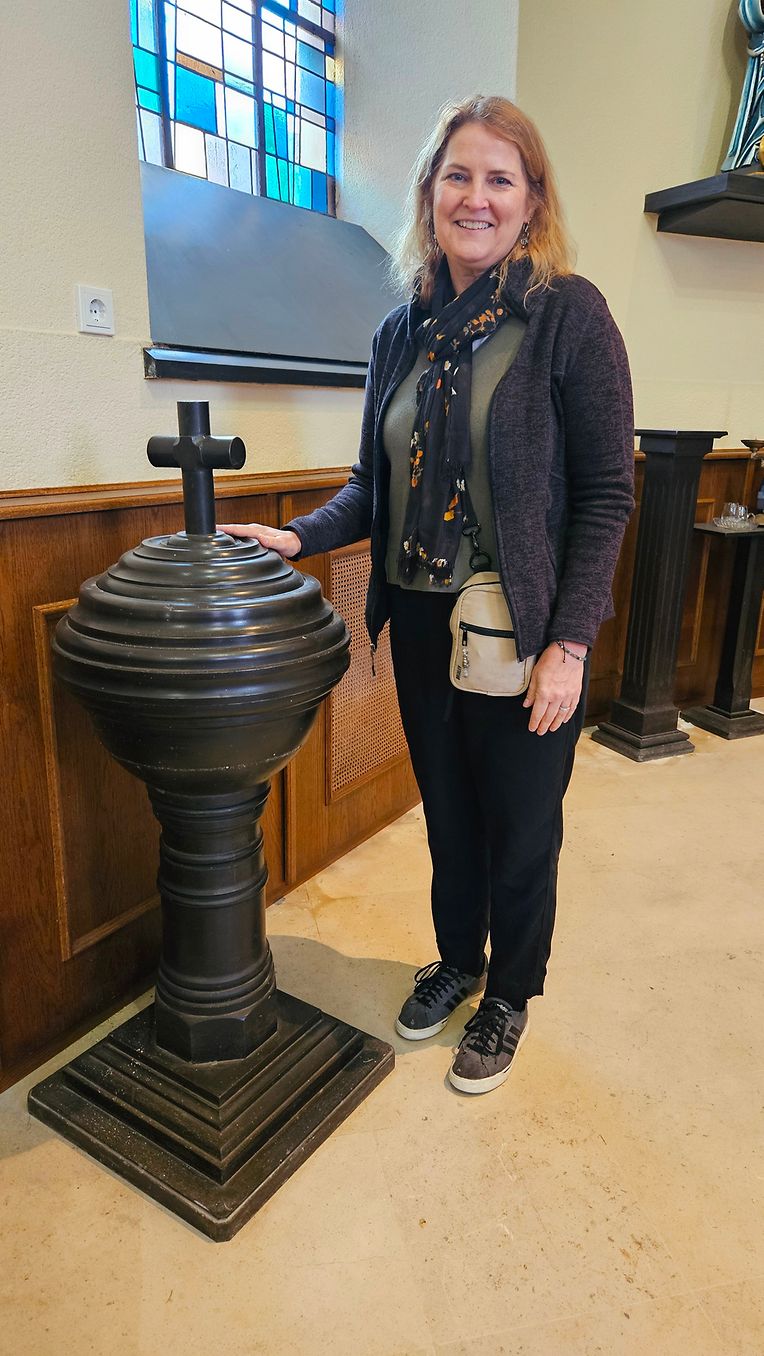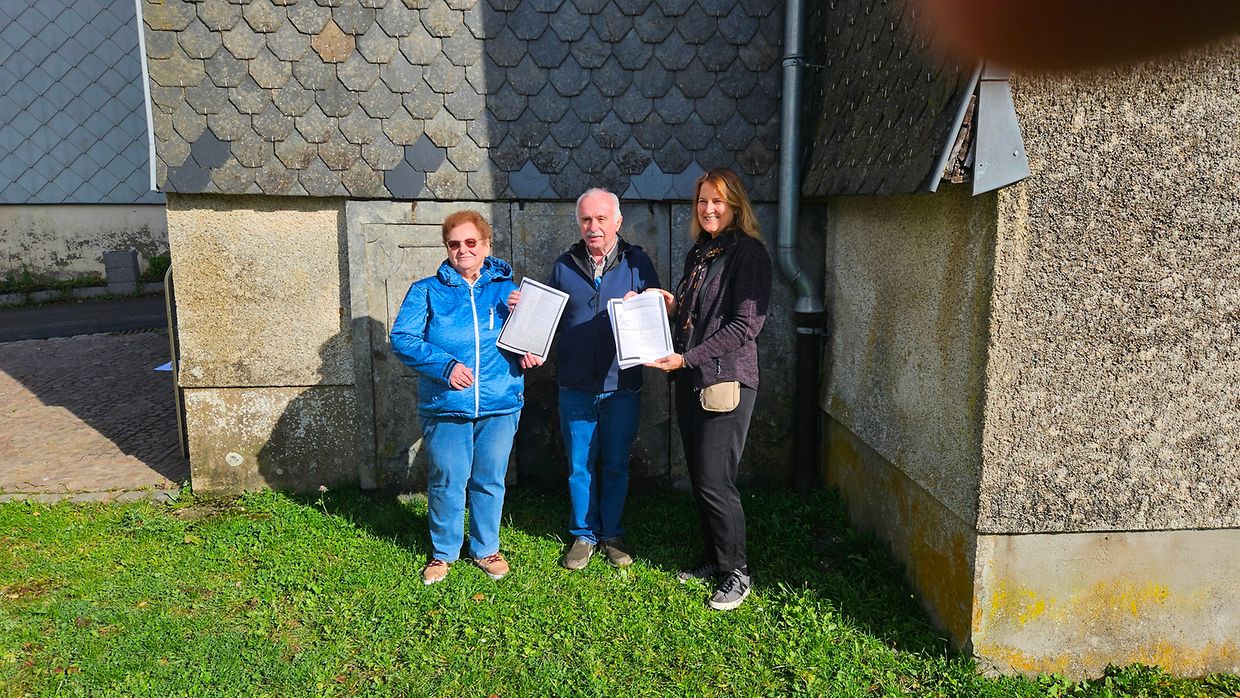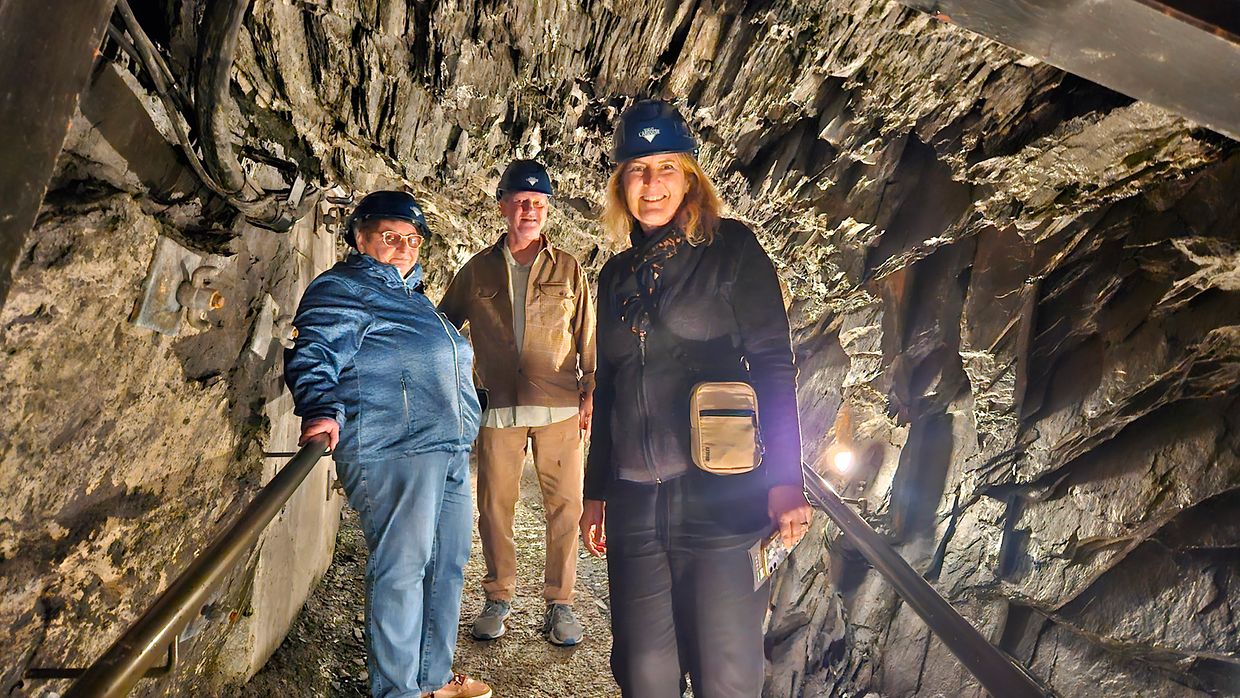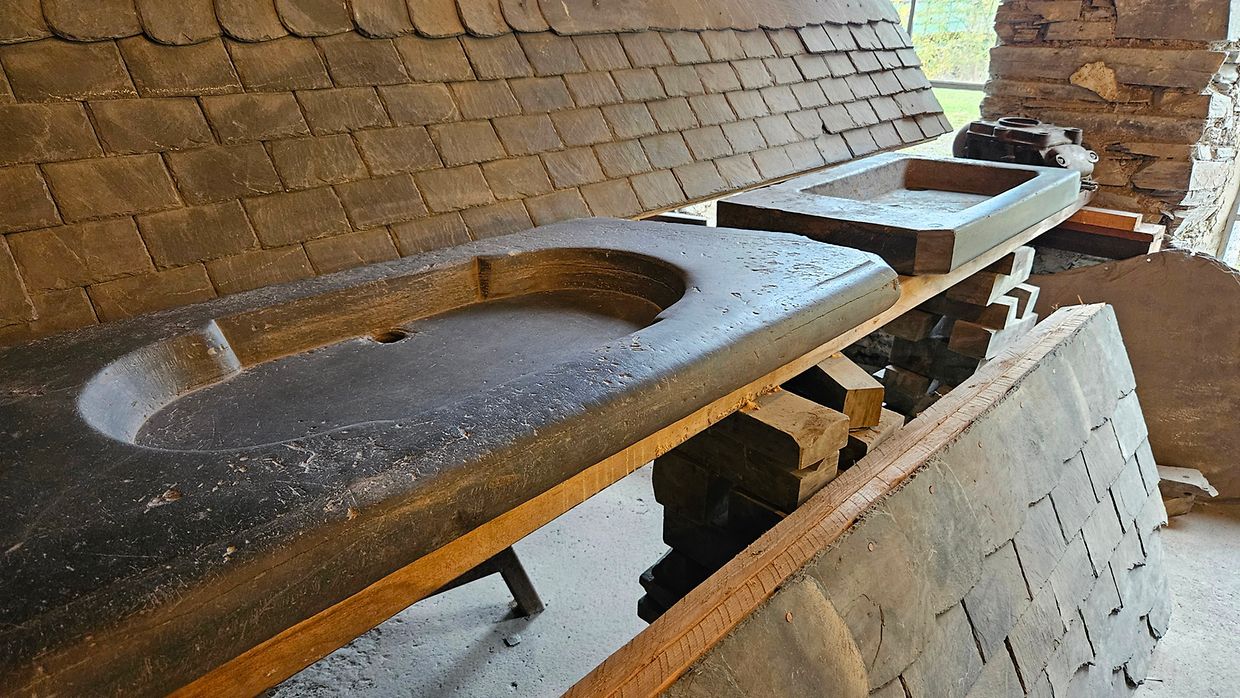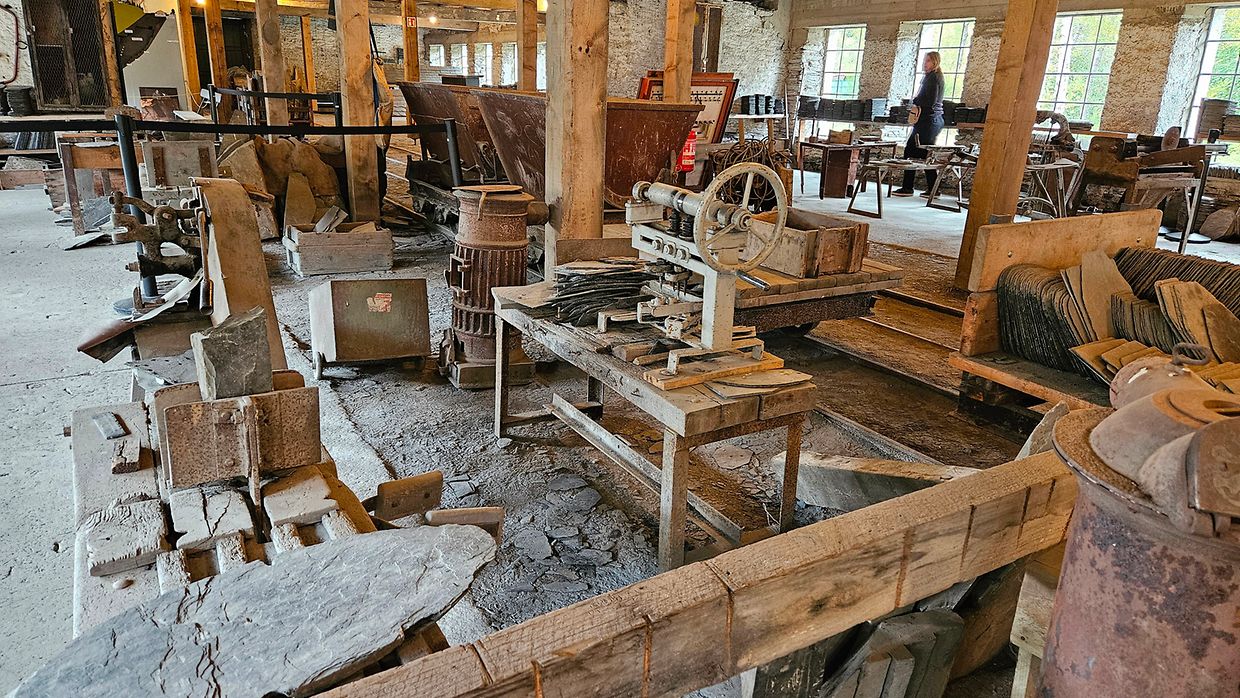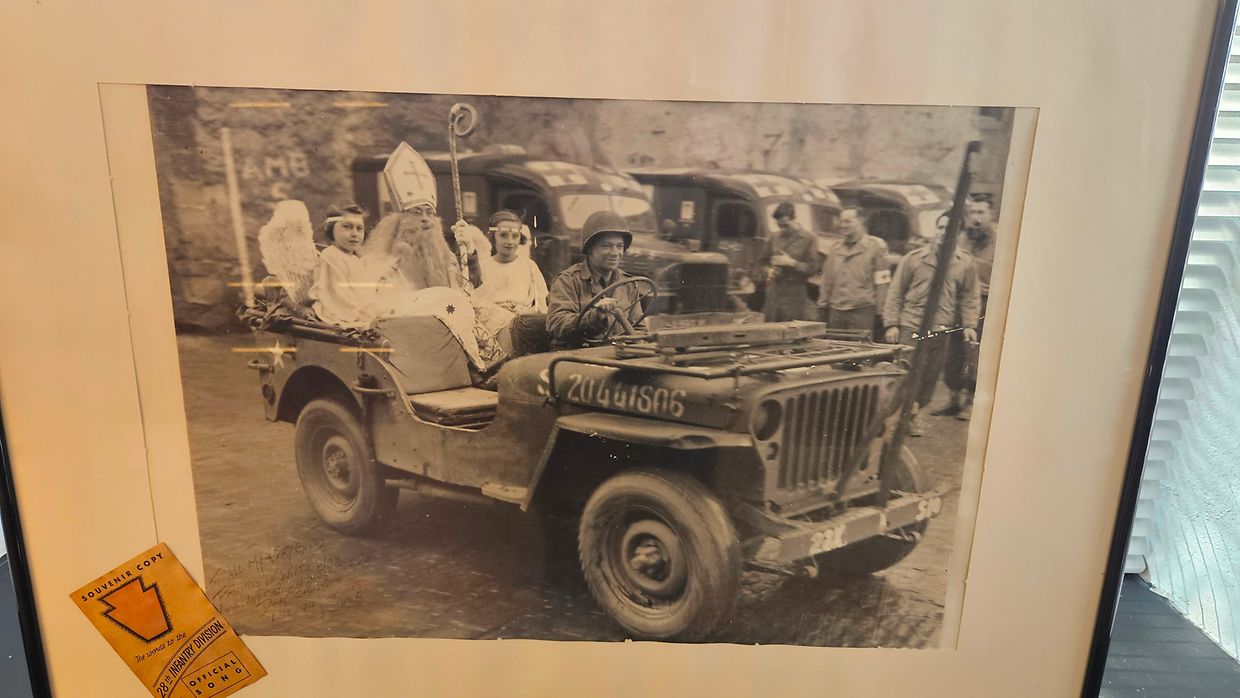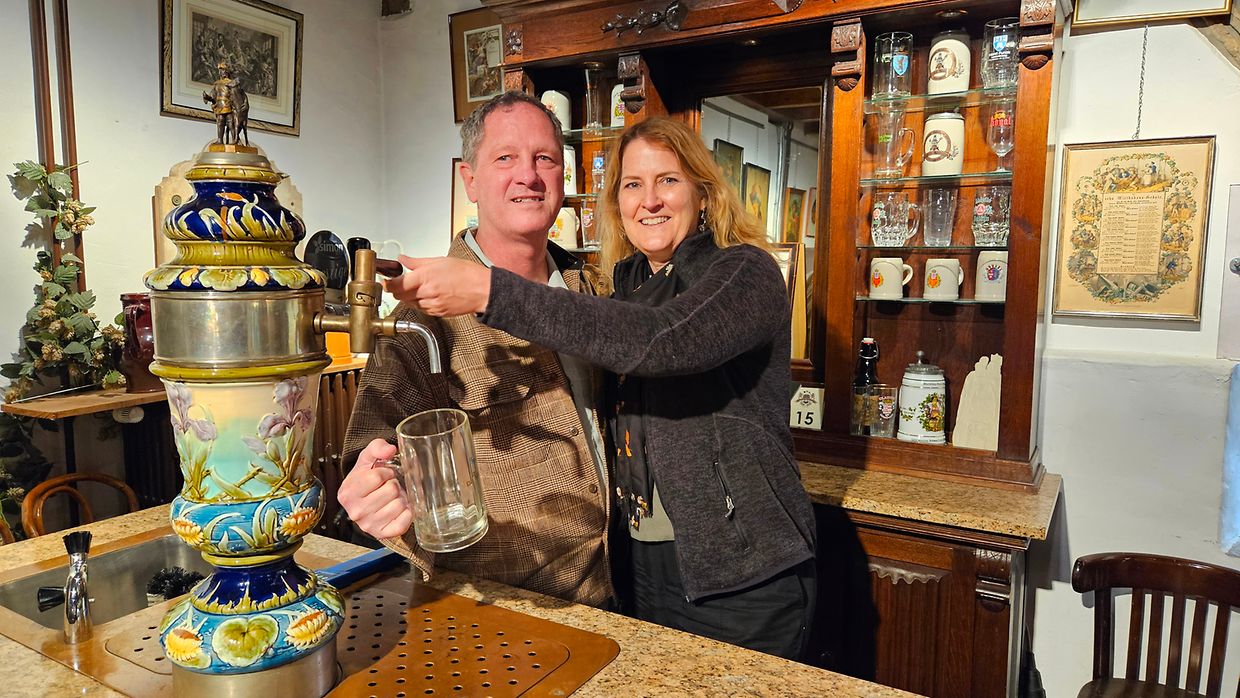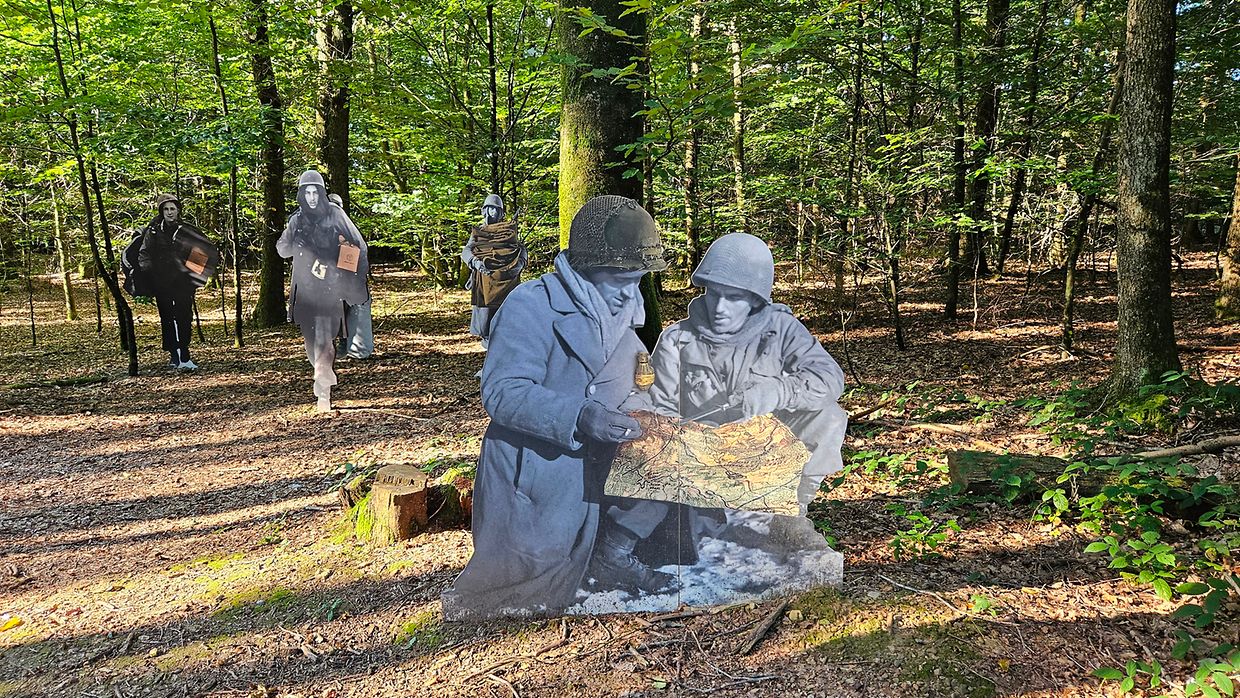Today I had the pleasure to accompany Mia Souders and her husband Stu during her visit on the traces of her ancestors in Luxembourg. Her ancestor Nicolas Steffen 1858 – 1938 Chicago was born in Wolwelange, son of Nicolas and Elisabeth Koedinger. His parents who had 10 children died in 1871 and 1880 and since then there was no trace of the family in Wolwelange. Nicolas had also a sister (Anna * 1856) who has emigrated to the USA, but for the moment I don’t know an exact date. So it was not so easy to find traces of this family in Wolwelange. But hopefully, in a short time, I was able to find the documents in the archives in Lux City where they sold their property in 1880-1881 and by this, the exact location of their ancestral home. And guess what?, my cousins wife, Jeanny Promme who is also hailing from Wolwelange and myself, we found out that her ancestors bought the house from the Steffen family. What a nice coincidence! So 143 years later, two members of these families met again in Wolwelange. In 1881 Nicolas Steffen was working as a servant in Paris and emigrated probably from there to the States. His sister Anna was already in Chicago at that time and gave power of attorney to the Notary Public Mathias Schmitz for the sale of the property. Two siblings, Dominique and Marguerithe war minors at that time, so there was a court decision before, allowing the sale of the property.
In the morning we first went to the “Klaus” in Wolwelange. A Klaus is an hermitage and according to an old legend a royal from the nearby Bigonville who had killed his stepbrother on that exact place later spent a repentant hermit existence in the 13th century on this place. The village church of Wolwelange was also on this spot. A small chapel remembers the old days. It is dedicated to the Painful Mother Maria and the 14 Holy Helpers. The original statues of the Holy Helpers are now in another church, at the chapel they are now represented by figurines made of porcelain. Wolwelange is a very old village and existed already during roman times. The old village was decimated by the soldiers during the war of 30 years and by the plaque and abandoned around the year 1637. Polish and creation soldiers killed the people and burned down all the houses. Later a new village and a new church, dedicated to St. Peter and Paul , were build a mile further to the west and is still existing today. Our fantastic guide here, was my friend Frank Dimmer who made an amazing presentation about the history. Villmols Merci Frank. He gave some explanations about the hermitage and a very deep incursion into the history of the parish and the church. He showed has some gems inside and outside the church. One particularity of the church is for example that the altar, baptismal font and station of the cross are made of the local slate stone. During the visit Mia had the pleasure to touch the baptismal font where here ancestor have been baptized.
Then we visited the place where the house of the Steffens was standing and Mia could see the place where here ancestors had lived before emigrating and I was happy to hand over copies from the documents about the sale of the property to her and Jeanny.
In the afternoon we visited the museum of the old slate mine in the nearby Haut-Martelange, because in 1880 Nicolas Steffen was working in a slate mine in the area. The first slate mine in this area was started end of the 18th century and other mines were opened. At the end of the 19th century some 6 millions roof plates were produced. Although roof slates were the main production branch, slate stone was also used to produce items like tombstones and kitchen sinks. In 1890 all the small mines from the area were taken over by a german family with the name of Rother. Around 1900 some 600 people were working here, so this industry had a great impact on the region. In 1986 the mine, the only one in Luxembourg at that time, was completely shut down. Today it has been transformed into a museum where you can walk to 42 meters underground and experience the harsh conditions for the workers and visit the productions halls where you can see how slate plates were produced in the old days.
After that we still had the time to drive to Wiltz and visit the national brewery museum (with the traditional picture behind the bar😊). Also at the same spot inside the Wiltz castle is a small museum about WWII. And especially interesting for Americans, Wiltz castle is also the original location of the famous American Saint Nick story.
A short walk on the WWII Memorial trail at Schumanseck near Nothum concluded the day. The trail leads by the remains of the fights like foxholes and trenches and is enriched with human sized silhouettes taken from pictures dating from the time of the battle. Indeed this place is the site of one of the deadliest fighting during the Battle of the Bulge. Thousands of soldier have lost their lives here. Today it is a quiet and peaceful forest, 80 years ago IT WAS THE HELL. Finally we had dinner at the famous Restaurant Schuman which was completely destroyed during the fights.
PS. Mia will sign her dual citizenship papers next Monday and has the services of Kevin Wester in that matter.
